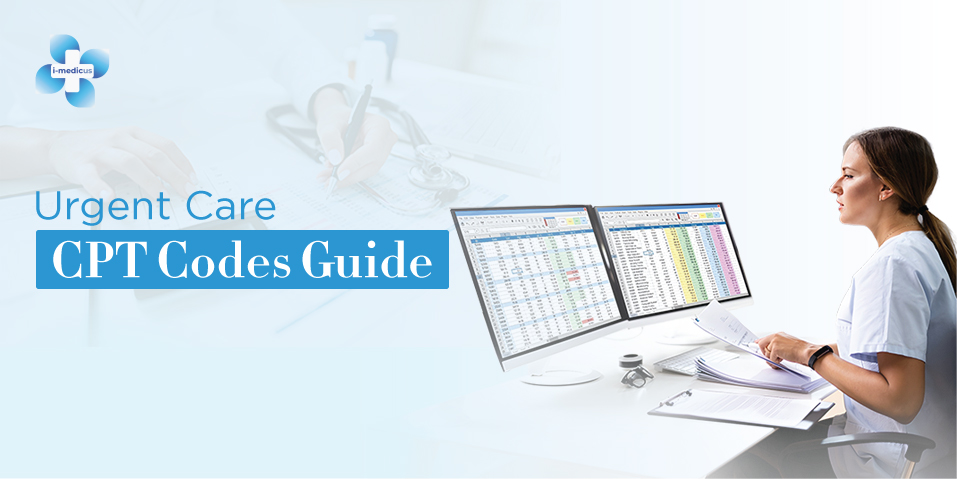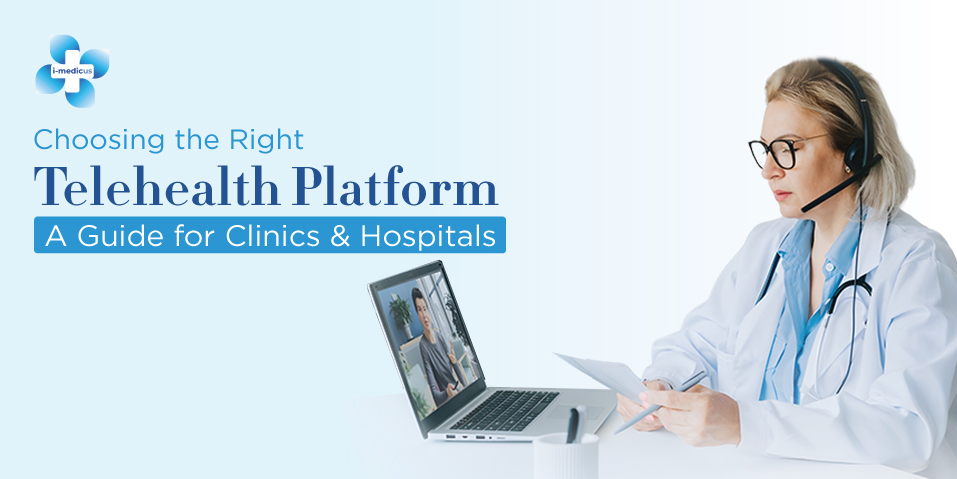With today’s fast-growing digitalization, urgent care is shaping the healthcare sector. And it is becoming normal to deliver medical services remotely. In fact, as per the stats, the global market of urgent care is expected to reach $26.8 billion in 2024. It clearly shows how fast the healthcare sector is shaping towards urgent care and becoming a new trend.
So, healthcare professionals and clinics must understand everything about urgent care to meet its rising demand. The most essential part of urgent care is urgent care CPT codes because newly adapted healthcare professionals and clinics face challenges with them. But not anymore!
This blog will explain everything about urgent care CPT codes and why they matter. And explore some of the most common urgent care CPT code usage and best practices for healthcare organizations so that they can use them effectively for medical billing and reimbursement.
By the end of this blog, healthcare professionals and organizations will be cognizant of the urgent care CPT codes, their uses, and how to implement them for maximum reimbursement.
What are Urgent Care CPT Codes?
Urgent care centres that offer medical care services remotely to patients use this five-digit, unique urgent care CPT codes to describe the services they provide to patients during urgent care billing so that these bills can be shared with insurance companies for the proper reimbursements.
These urgent care codes cover patient visits, minor procedures, tests, and treatments. These codes help insurance companies quickly understand – what care was given by the urgent care centre so that they can pay adequately for the care.
However, many healthcare professionals become confused with so many CPT codes and use the wrong codes while billing. This leads to payment delays or denied claims. That is why every healthcare centre prefers to understand CPT codes for accurate reimbursement.
Why do CPT Codes Matter in Urgent Care Billing?
Urgent CPT Codes are used to uniquely describe each medical service during billing. As urgent care centres offer a wide range of services such as patient visits, testing, treatments, medications, etc., there are unique CPT codes to describe each service. And urgent care centres use these CPT codes while billing for their services so that insurance companies quickly review their medical billings and pay on time for the care they deliver. Plus, centres also get accurate reimbursement for the service they provide via insurance companies. These CPT codes will keep updating over time in the healthcare sector. That’s why telehealth app professionals and urgent care centres need to stay updated with urgent care CPT codes for proper reimbursement.
Most Common Urgent Care CPT Codes List
Here’s the list of the most commonly used urgent care CPT Codes and its uses:
Evaluation and Management (E/M) Codes
These CPT Codes are used for patient visits and managing conditions. The most common E/M codes for urgent care are:
- 99202-99205: New Patient Visit
- 99212-99215: Established Patient Visit
Urgent Care Procedure Codes
For procedures like wound repairs or treating fractures, these codes are used:
- 12001-12018: Simple wound repair
- 29515: Application of a short leg splint
- 29200: Strapping of thorax
Diagnostic Testing Codes
For lab tests, X-rays, and other diagnostics, use these codes:
- 71045: Chest X-ray, single view
- 80061: Lipid panel
- 87804: Rapid strep test
Injection and Infusion Codes
For injection or infusion services, use these codes:
- 96372: Therapeutic injection (e.g., antibiotics, steroids)
- 96374: IV push injection (therapeutic, prophylactic, or diagnostic)
Immunization Codes
These codes are used for administering vaccines:
- 90471: Immunization administration for one vaccine
- 90472: Immunization administration for each additional vaccine
Exclusive ‘S’ Codes for Urgent Care
The four most special urgent care CPT codes are recognized as ‘S’ codes. These codes are part of the Healthcare Common Procedure Coding System (HCPCS) and are used to identify specific telehealth services in urgent care. Here are four ‘S’ codes in urgent care:
S9083: Global Fee for Urgent Care Centres
This code is used for a flat-rate billing structure that covers all the services during a single visit, regardless of the number of procedures or tests that happen. However, not all insurance companies accept this CPT code, so clinics need to check earlier with payers.
S9088: Services Rendered in an Urgent Care Centre
This code indicates the services provided in urgent care, which help insurers process the claim correctly. It’s used for those who provide care in the emergency room or primary care.
S9123: Nursing Care by Registered Nurse (RN) in the Home
This code is used when a registered nurse provides nursing care at a patient’s home. Although it is mainly used for home health care, some urgent care centres may use it if they offer home-based urgent care services.
S9124: Nursing Care by Licensed Practical Nurse (LPN) in the Home
This code is similar to S9123 but for only care provided by a licensed practical nurse (LPN) instead of a registered nurse (RN). It applies when LPNs offer nursing services at a patient’s home, outside of an urgent care centre.
Challenges of Urgent Care Coding and Billing
Even though healthcare centres need to use CPT Codes, there are some challenges they need to face while billing:
- Complex Coding: Urgent care and primary care CPT codes like CPT code 99213 are similar, and that creates confusion for healthcare professionals about using the accurate code while billing. So, each professional needs to use the correct code to receive proper reimbursement. Otherwise, it can lead to denied claims or payment delays.
- Time Constraints: Urgent care staff often don’t have time to get insurance approval before treating patients, which makes billing more complex.
- Medicare Limitations: Medicare covers 80% of urgent care costs, but its reimbursement is usually lower than that of other private insurance payers.
Changes to Urgent Care CPT Codes in 2025
The American Medical Association (AMA) updates CPT codes every year. So, there are 270 new codes, 38 revisions, and 112 deletions brought in 2025. Here are some critical urgent care CPT code updates:
- Remote Therapeutic Monitoring (RTM) codes have been updated to cover digital therapies and devices for transmitting or accessing data.
- New Category III codes for AI-based medical services AND 7 new codes for analyzing ECGs and chest imaging (codes 0877T-0880T).
- Changes in the general surgery section, including new codes for tumour removal in the abdomen and skin grafts.
Best Practices for Using Urgent Care CPT Codes
Here are some best practices that every healthcare center can follow to use urgent care CPT codes efficiently:
- Document Patient Details: You need to continuously record key information like the patient’s main complaint, medical history, test results, treatment plan, and how they responded to treatment in electronic health records.
- Stay Updated on Code Changes: As you know, CPT codes change or are updated every year. So, you need to stay updated with code changes for accurate reimbursement and avoid claim rejection.
- Train Your Staff: Many centres make the mistake of not training staff, and this leads to several claim rejections for wrong codes like 99213 vs. 99214 usage. So, make sure to train your staff from time to time on the latest rules to handle complex cases.
- Use the Right Modifiers: Modifiers can explain services more clearly and prevent denials.
- Conduct Regular Coding Audits: Regular audits will help you find mistakes and improve your coding practices, leading to accurate reimbursement.
Conclusion
Urgent Care CPT Codes are essential for healthcare centres to get proper reimbursement for the services they provide to patients. Plus, the rapid growth and adoption of urgent care globally shows the importance of staying updated with urgent care guidelines and codes. We hope this guide helps you understand everything about Orange Care CPT codes, including the importance, challenges, and best practices for using these CPT codes more effectively. However, it’s always preferred for healthcare centres to work with experts to ensure streamlined operations and accurate reimbursement. This is where i-medicus comes in as a trusted telehealth solution for healthcare centres to adapt to the rise of urgent care and expand their reach to worldwide patients. Try i-medicus today!








